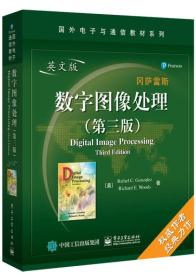
软件工程:国外优秀信息科学与技术系列教学用书
正版二手,均有笔记不影响使用,无赠品、光盘、MP3等。如需购买套装书,请联系客服核实,批量上传数据有误差,套装书售后运费自理,还请见谅!
¥ 7.38 2.0折 ¥ 37 八五品
库存5件
山东枣庄
认证卖家担保交易快速发货售后保障
作者[美]Shari Lawrence Pfleeger
出版社高等教育出版社
出版时间2001-08
版次1
装帧平装
货号9787040100990
上书时间2024-07-01
- 最新上架
商品详情
- 品相描述:八五品
图书标准信息
- 作者 [美]Shari Lawrence Pfleeger
- 出版社 高等教育出版社
- 出版时间 2001-08
- 版次 1
- ISBN 9787040100990
- 定价 37.00元
- 装帧 平装
- 开本 其他
- 纸张 胶版纸
- 页数 659页
- 字数 900千字
- 【内容简介】
-
本书根据本科软件工程课程要求编写。本书在系统阐述软件工程理论与方法的同时,将软件工程的概念和方法应用于实践当中,体现理论研究与实践性的结合。书中的实例既考虑到学生有限的实践经验,同时也清楚地说明了大型软件开发项目如何由基本的需求逐步变成现实的软件系统,并通过贯穿全书的两个典型实例项目进行介绍。
本书也适合作为研究生开设软件工程概念与实践课程的导论教材,对软件开发人员拓展和系统掌握软件工程的知识也是很有用的。书中还包括了其他许多类型的实例,这些例子都是读者极有可能碰到的。特别在第12、13、14章给出了一些会引发思考的材料,可作为研究生当前的研究课题。本书在第一版基础上除作了全面更新修改外,主要增加了三方面的内容:面向对象技术及UML,软件工程未来的发展以及有关团队项目的内容。
内容:1. 为什么需要软件工程 2. 过程和生命周期建模 3. 项目计划和管理 4. 需求获取 5. 系统设计 6. 面向对象技术 7. 编写程序 8. 程序测试 9. 系统测试 10. 系统提交 11. 系统维护 12. 产品、过程和资源评估 13. 预测、产品、过程和资源的改进和改善 14. 软件工程的未来 - 【作者简介】
- 本书作者Shari L.Pfleeger女士是一家提供软件工程和技术咨询公司的总裁。她经常在马里兰大学讲授研究生的软件工程课程。Pfleeger女士在软件工程实验研究方面最为著名,出版了大量文章和书籍,系统与软件杂志曾多次将她列为世界*的软件工程研究专家之一。
- 【目录】
-
Preface
1 Why Software Engineering?
1.1 What Is Software Engineering?
1.2 How Successful Have We Been?
1.3 What Is Good Software?
1.4 Who Does Software Engineering?
1.5 A Systems Approach
1.6 An Engineering Approach
1.7 Members of the Development Team
1.8 How Has Software Engineering Changed?
1.9 Information Systems Example
1.10 Real-Time Example
1.11 What This Chapter Means for You
1.12 What This Chapter Means for Your Development Team
1.13 What This Chapter Means for Researchers
1.14 Term Project
1.15 Key References
1.16 Exercises
2 Modeling the Process and Life Cycle
2.1 The Meaning of Process
2.2 Software Process Models
2.3 Tools and Techniques for Process Modeling
2.4 Practical Process Modeling
2.5 Information System Example
2.6 Real-Time Example
2.7 What This Chapter Means for You
2.8 What This Chapter Means for Your Development Team
2.9 What This Chapter Means for Researchers
2.10 Term Project
2.11 Key References
2.12 Exercises
3 Planning and Managing the Project
3.1 Tracking Progress
3.2 Project Personnel
3.3 Effort Estimation
3.4 Risk Management
3.5 the Project Plan
3.6 Process Models and Project Management
3.7 Information System Example
3.8 Real-Time Example
3.9 What This Chapter Means for You
3.10 What This Chapter Means for Your Development Team
3.11 What This Chapter Means for Researchers
3.12 Term Project
3.13 Key References
3.14 Exercises
4 Capturing the Requirements
4.1 The Requirements Process
4.2 Types of Requirements
4.3 Characteristics of Requirements
4.4 How to Express Requirements
4.5 Additional Requirements Notations
4.6 Prototyping Requirements
4.7 Requirements Documentation
4.8 Participants in the Requirements Process
4.9 Requirements Validation
4.10 Measuring Requirements
4.11 Choosing a Requirements Specification Technique
4.12 Information Systems Example
4.13 Real-Time Example
4.14 What This Chapter Means for You
4.15 What This Chapter Means for Your Development Team
4.16 What This Chapter Means for Researchers
4.17 Term Project
4.18 Key References
4.19 Exercises
5 Designing the System
6 Concerning Objects
7 Writing the Programs
8 Testing the Programs
9 Testing the System
10 Delivering the System
11 Maintaining the System
12 Evaluating Products,Processes,and Resources
13 Improving Predictions,Products,Processes,and Resourees
14 The Future of Software Engineering
Annotated Bibliography
Index
点击展开
点击收起
— 没有更多了 —












以下为对购买帮助不大的评价